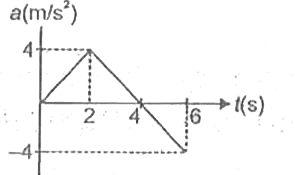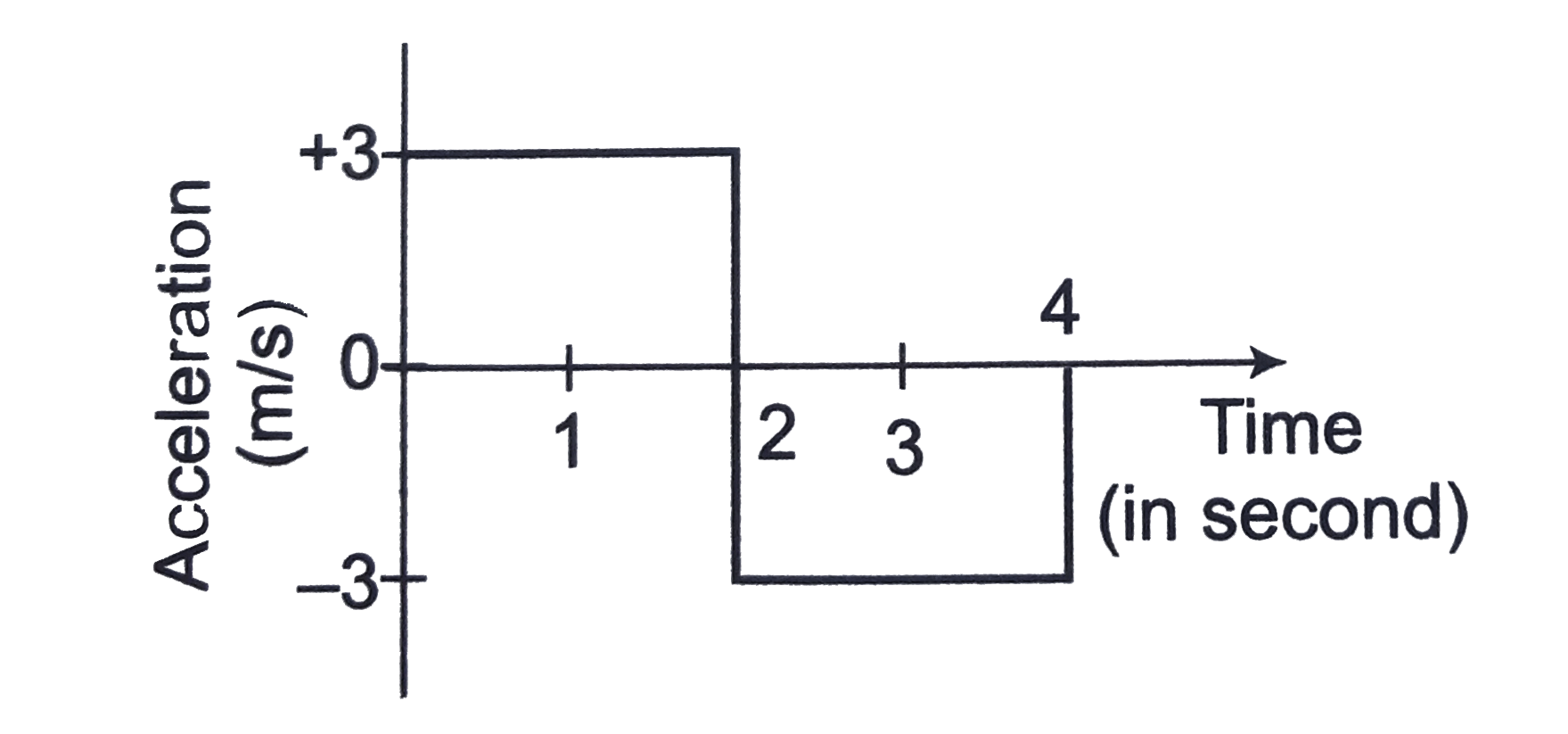A particle which is initially at rest at the origin, is subjection to an acceleration with x− and y− components as shown. After time t=5 , the particle has no acceleration.

What is the magnitude of average velocity of the particle between t=0 and t=4 seconds ?
52√13m/s
52√17m/s
30m/s
None of these
The correct Answer is:B
At,t=2sec(t=2sec)
vx=ux+axt=0+10×2=20m/s
vy=uy+ayt=0−5×2=−10m/s
v=√v2x+v2y=√(20)2+(−10)2=10√5m/s
From t=0,t=4sec
x[12(10)(2)2](0→2)+[(10×2)2−12(10)(2)2](2→4)
x=40m
y=[−125(2)2](0→2)−[(10)(2)−12(10)(2)2](2→4)
y=−10m
Hence , average velcoity of particle between t=0 to t=4sec is
vav=ΔxΔt=√(40)2+(−10)24
vav=52√17m/s
At,t=2sec,u=10×2=20ms
After t=2sec
v=u+at
0=20−10t
t=2sec.
Hence, at t=4 . the particle is at its farthest distance from the y−axis.
The particle is at farthest distance from y− axis at t≥4. Hence the available correct choice is t=4.
Similar Questions
A particle stats from rest at the origin with a constant acceleration
Calculate the position of the particle at t=5 second.View SolutionThe position of a particle moving along an x axis is given by x=12t2−2t3, where x is in meters and t is in seconds. Determine (a) the position, (b) the velocity, and (c) the acceleration of the particle at t=3.5s. (d) What is the maximum positive coordinate reached by the particle and (e) at what time is it reached ? (f) What is the maximum positive velocity reached by the particle and (g) at what time is it reached ? (h) What is the acceleration of the particle at the instant the particle is not moving ( other than at t=0 ) ? (i) Determine the average velocity of the particle between t=0 and t=3s .
View Solution
Knowledge Check
- Question 1 - Select One
A particle which is initially at rest at the origin, is subjection to an acceleration with x− and y− components as shown. After time t=5 , the particle has no acceleration.

What is the magnitude of velocity of the particle at t=2 seconds ?A10√5m/sB5√10m/sC5√5m/sDNone of these - Question 2 - Select One
A particle which is initially at rest at the origin, is subjection to an acceleration with x− and y− components as shown. After time t=5 , the particle has no acceleration.

When is the particle at its farthest distance from the y− axis ?A3sec.B2sec.C4sec.D1sec. - Question 3 - Select One
Starting from rest, acceleration of a particle is a=2t(t−1). The velocity of the particle at t=5s is
AAt t=2s, the position of the particle is at x=9mBParticle acceleration at t=2s is 1m/s2CParticle acceleration is 1/2m/s2 through out the motionDParticle will never go in negative direction from it's starting position
Starting from rest, the acceleration of a particle is a=2(t-1). The velocity of the particle at t=5s is :-
View Solution. If the velocity of a particle is (10 + 2 t 2) m/s , then the average acceleration of the particle between 2s and 5s is
View SolutionThe velocity of a moving particle is given by the equation v=(5−t2) The average acceleration of the particle between the 2nd and 3rd seconds is
View SolutionFor the acceleration - time (a - t) graph shown in figure, the change in velocity of particle from t = 0 to t = 6 s is
 View Solution
View SolutionA particle starts from rest at t=0 and moves in a straight line with an acceleration as shown below. The velocity of the particle at t=3 s is
 View Solution
View Solution

